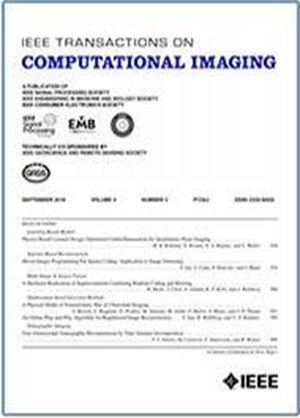多视频超分辨率:稀疏相机阵列的时空融合
IF 4.8
2区 计算机科学
Q2 ENGINEERING, ELECTRICAL & ELECTRONIC
引用次数: 0
摘要
稀疏相机阵列捕获同一空间平面内场景的多幅图像,实现超分辨率重建。然而,现有的方法往往不能充分利用时间作为增强信息获取的额外维度。即使同时收集时间和空间观测,它们各自的贡献也常常被混为一谈。对系统成像模型的分析表明,将摄像机阵列与视频序列相结合的时空摄像机系统具有更大的退化恢复潜力。在此基础上,我们提出了一种用于时空信息融合的新型多视频超分辨率网络。在明确的物理维度方向的指导下,网络有效地整合空间信息并沿着时间维度传播。通过利用多样化和信息丰富的时空采样,我们的方法更容易解决重建过程中由不适定映射矩阵引起的挑战。在合成数据集和真实数据集上的实验结果表明,我们的网络组件具有充分传播和时空融合的信息,协同工作以提高超分辨率性能,比最先进的方法提供了实质性的改进。我们相信我们的研究可以通过优化信息获取和利用来激发未来超分辨率任务的创新。本文章由计算机程序翻译,如有差异,请以英文原文为准。
Multi-Video Super-Resolution: Spatiotemporal Fusion for Sparse Camera Array
A sparse camera array captures multiple images of a scene within the same spatial plane, enabling super-resolution reconstruction. However, existing methods often fail to fully exploit time as an additional dimension for enhanced information acquisition. Even when temporal and spatial observations are collected simultaneously, their individual contributions are often conflated. Analysis of the system’s imaging model reveals that the spatiotemporal camera system, integrating a camera array with video sequences, holds greater potential for degradation recovery. Based on these insights, we propose a novel multi-video super-resolution network for spatiotemporal information fusion. Guided by explicit physical dimensional orientation, the network effectively integrates spatial information and propagates it along the temporal dimension. By utilizing diverse and informative spatiotemporal sampling, our method more readily addresses challenges arising from ill-posed mapping matrices during reconstruction. Experimental results on both synthetic and real-world datasets show that the components of our network, with information fully propagated and spatiotemporally fused, work synergistically to enhance super-resolution performance, providing substantial improvements over state-of-the-art methods. We believe our study can inspire innovations for future super-resolution tasks by optimizing information acquisition and utilization.
求助全文
通过发布文献求助,成功后即可免费获取论文全文。
去求助
来源期刊

IEEE Transactions on Computational Imaging
Mathematics-Computational Mathematics
CiteScore
8.20
自引率
7.40%
发文量
59
期刊介绍:
The IEEE Transactions on Computational Imaging will publish articles where computation plays an integral role in the image formation process. Papers will cover all areas of computational imaging ranging from fundamental theoretical methods to the latest innovative computational imaging system designs. Topics of interest will include advanced algorithms and mathematical techniques, model-based data inversion, methods for image and signal recovery from sparse and incomplete data, techniques for non-traditional sensing of image data, methods for dynamic information acquisition and extraction from imaging sensors, software and hardware for efficient computation in imaging systems, and highly novel imaging system design.
 求助内容:
求助内容: 应助结果提醒方式:
应助结果提醒方式:


